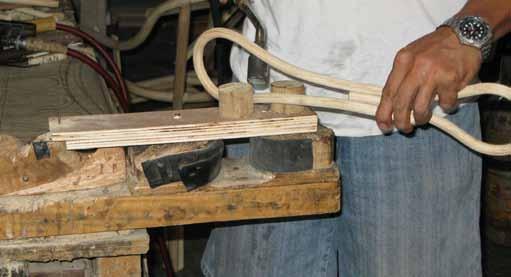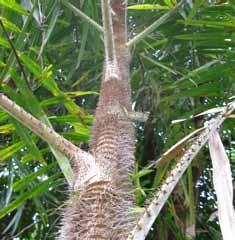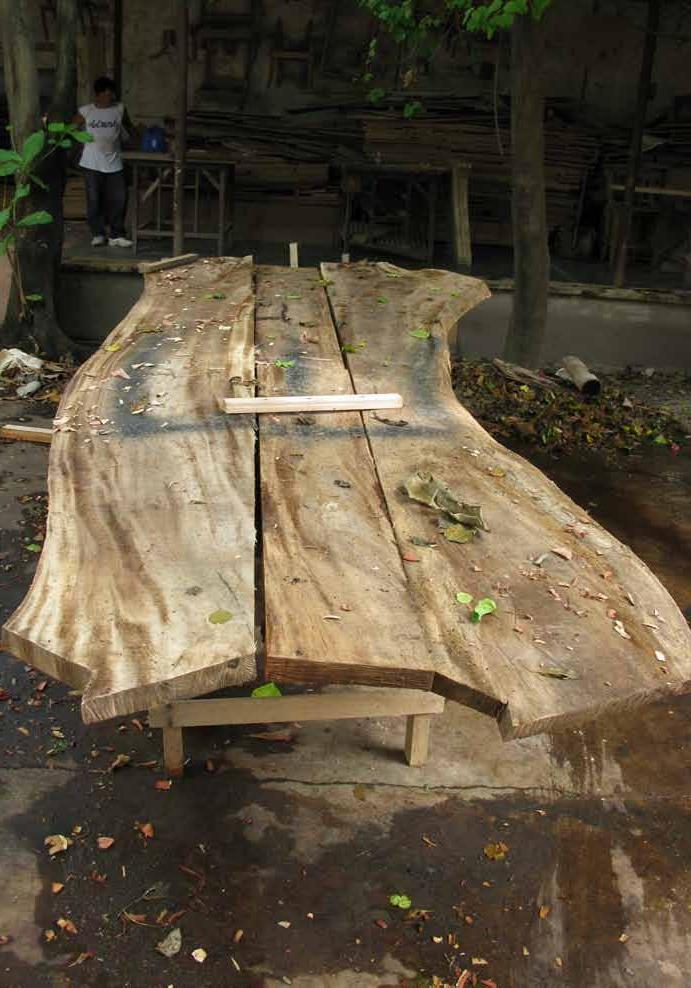Improving wood quality through plantation management a. silviculture b. choice of most suitable species/species mix (including prime hardwoods) c. de-branching d. thinning e. harvesting at an optimum age Reducing the wastage during a. harvesting b. hauling c. ripping d. sawmilling
e. storage f. drying Venturing further up the wood preparation value chain a. felling b. hauling c. ripping d. sawmilling e. air-drying f. kiln-drying
Establishing a buyers’ information system for better linkage of buyers and producers Taking over trading function a. eliminating one or more trading levels b. building up direct trade relations with further processors
Reducing or eliminating SOPs a. for licenses b. checkpoints c. monitoring fee
Box 01. A summary of how improvements can be achieved to improve the competitiveness of farmers/POs.
companies successfully. Further processing at the location where the wood is produced gives advantages at least up to the level of ready-to-sell lumber.
CASE STUDY: GMELINA
adding value to gain income It can be seen from Table 4 that the net returns per cubic meter of Gmelina increase as the farmer is made to perform other functions higher up the value chain. The benefit at higher processing levels is not only higher sale prices, but increased income opportunities for community members and a broader range of possible buyers. This is of special importance since the supply of the most common plantation species like Gmelina and (Honduras) Mahogany seems to be higher than the domestic demand. Only higher quality and well-processed lumber can increase the competitiveness that might be necessary to operate profitably in the long run. Fig, 6 shows the value added per board foot of lumber as the material moves from the supply side to the consumer end of the value chain. These are based on the differences in prices as the product enters into and exits from one function to another in the plantation wood value chains. For purposes of simplifying the illustration, only the average prices are shown. Note that the closer the functions are to the markets, the higher are the profit margins associated with the products.
The range of prices paid for lumber as of the end of 2008 at different levels of the chain and at different locations are presented in Table 6. The selling prices can be represented by a simplified value chain for sales from Leyte Island to Cebu City as shown in Fig. 7. In the National Capital Region (NCR), prices for Gmelina wood are on average Php3/ bd ft higher than in Cebu City. The plantation wood value chain often includes hidden profits. Some examples of how these arise are through the following: (a) The trader has fewer expenses for the harvesting operation than calculated for determining the farm gate price when buying from POs; (b) Volumes are understated to save fees, government share, etc.; (c) The same low price for Gmelina is paid for all species harvested although selling prices are usually higher for other species; (d) Flitches are bought oversized and the lumber is sold undersized after re-
Plantation Wood, Rattan and Bamboo in Leyte Island | Value Chains to benefit income generation of forest farmers
31





